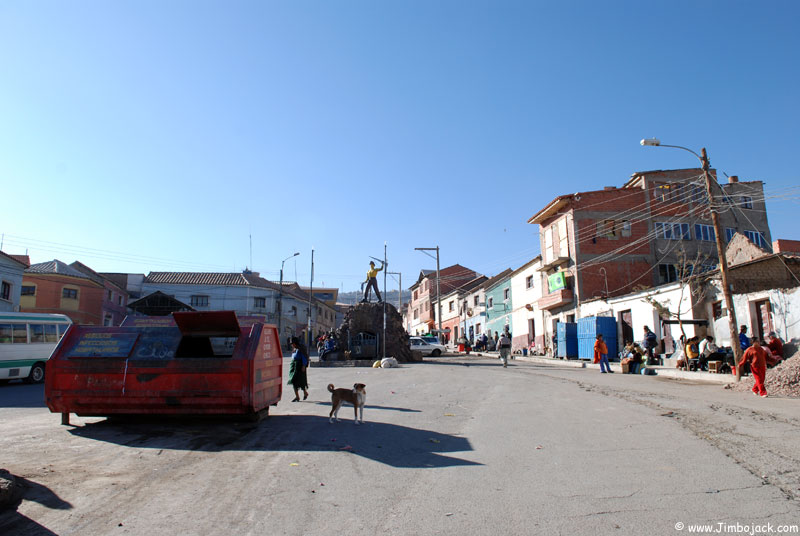
The city of Potosi is located in the south of Bolivia. The original founding story, although not completely factual, is very interesting.
While searching for a lost llama, Diego Huallpa, a local Inca, stopped to build a fire at the foot of the mountain. The mountain was know as "Potojsi", which means "explosion" or "thunder" in the Quechua (w) language. The fire was so hot that it started to melt the earth beneath it, and a shiny liquid came out from the ground. Diego realized that this liquid was melted silver, a metal the Spanish were searching for. Eventually the Spanish found out about the wealth contained in the ground and Villa Imperial de Carlos V was founded on April 10th, 1545 by Juan de Villarroel as a mining town at the foot of the mountain, now known as Cerro Rico (Rich Hill).
Almost immediately thousands of indigenous slaves were forced to mine the mountain, and the silver started being shipped back to Spain. The work was very dangerous and unhealthy, many mitayos, or miners, died from silicosis pneumonia and accidents. The Spanish however came up with a solution to the labor problems and imported vast amounts of African slaves to continue the silver production.
In 1572 the Viceroy of Toledo instituted the Ley de la Mita, a program to increase the productivity of the mining operations. It required that all African and Indigenous slaves over 18 years of age work 12 hour shifts. The workers would remain underground for four months at a time, not seeing any daylight. When they were finally allowed outside, their eyes had to be covered in order to avoid damage from the sunlight.
In addition to mining, another very dangerous job was operating the ingenios, or smelting mills. The silver smelting process required vast amounts of mercury, which poisoned many of those working with it.
It has been estimated that during the three centuries of colonial rule (1545 to 1825) as many as eight million indigenous and African people died from the mining process.
After the silver was smelted, it was transported by llama train to Arica (Chile) or to Lima (Peru), from there it was taken to Spain.
Potosi became a boom town, over 80 churches were constructed, exotic European goods were being shipped in for the wealthy, and the population grew to 200,000 people, making it one of the largest cities in the world.
In 1572 a mint was established in the city of Potosi under the order from the Viceroy of Toledo, it was the first mint and produced the first coins in the Americas. The replacement mint (currently being used as a museum) was built between 1753 and 1773. Coins minted were know as potosis, and bore the mint mark of "P". The current building was also used as a prison, a fortress, and as a headquarters of the Bolivian army during the Chaco War. The last coins were minted here in 1953. None of the coins or paper money in use in Bolivia today are made within the country. Paper money is printed in France, Canada makes the bi-metallic 5 Boliviano coins, and the rest are minted in Spain. They are however made from metal that is extracted in Bolivia. A museum guide told me that it is cheaper for Bolivia to have the coins minted and shipped from other places then it is to mint them in the country.
In the early 19th century, the output of the mines began to decline. Potosi was looted during the independence struggles in Alto Peru, and the population dropped to less then 10,000 people. In the last century, the demand for tin has brought about a slow recovery for the city. Zinc and lead are currently the biggest metallic exports from Bolivia. Silver is still mined, however it is on a small scale. Most of the raw material coming out of the mines are rocks containing two or more minerals, which are then separated in a smelter.
Most of the miners working in Cerro Rico today are part of miner owned cooperatives. The miners working for a cooperative make the same amount of money, and jobs are rotated between them every few months. The working conditions have changed little since the colonial times, and miners normally die within 10 to 15 years of starting to work in the mines from silicosis pneumonia. The wage that the miners earn used to be very low, but has risen dramatically over the past few years due to increased global demand for raw materials. Most of the minerals extracted are shipped by train to Chile, and go by ship to China, Canada, The U.S., Germany and Switzerland. A few years ago, a typical miner would earn about 600 Bolivianos a month (about $77.37 ), today that has risen to over 4,000 Bolivianos a month (about $515.77) making it one of the highest paying jobs in Bolivia. Due to the growing worldwide demand for metals, I would predict that the workers wages will be fairly stable in the next few years, possible going up even more.
The mining cooperatives provide a lot of benefits for the workers. Due to the inability of the government to provide healthcare or money for other social programs, the cooperatives care for their workers by providing needed services. For example, they hire their own doctors and rent medical facilities. In case of an accident, a miner is taken directly to the medical facility and is cared for until he recovers. The cooperative pays for all of the costs associated with the stay. They also regularly check up on the miners, and do x-rays of the lungs for miners that might be getting silicosis pneumonia. Once a miner loses 50% or more of his lung capacity, he has an option of retiring. Once retired, he can collect a pension from the cooperative for the rest of his life. If he dies, the widow and children collect this pension until the widow dies.
Not all of the workers are part of the cooperative however, I was told that at the moment only about 25% of the 14,000 people that work the mountain belong to the co-op. A worker has to start as an assistant, working various jobs for about 4 years before he can join. Once he is a part of the co-op, a monthly fee is deducted from his paycheck. This fee goes towards funding medical care, retirement plans, and other programs.
All of this may come to an end, the mountain is predicted to be workable for another 12 to 15 years. Over 450 years of mining have used up an estimated 50% of the resources that the mine had to offer. The remaining 50% however are going to be increasingly difficult to get, tunnels already dug in the mountain have to be given a wide berth so the mountain doesn't collapse. There have been plans to eventually turn the mountain into a strip mine, but the local indigenous population has protested against it. The mountain to them is sacred and a symbol of the city. In a city of around 150,000 people, it is estimated that around 60% are working because of the mine. Miners, people working in the miners markets, truck drivers, operators of the smelting mills, tour guides, tour companies, bus drivers, hotels, restaurants are all dependent on the mine's output and the tourists that come to visit it. Once they can no longer mine Cerro Rico in the traditional way, indigenous beliefs will have to stand up against the basic need for economic sustenance.
Part of Potosi where the miners shops and markets are

Aggie ready for the mine
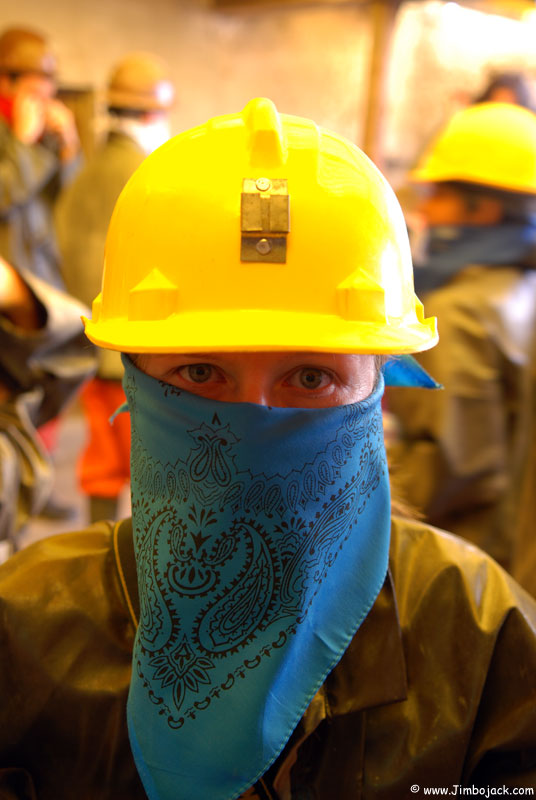
Shop with mining supplies
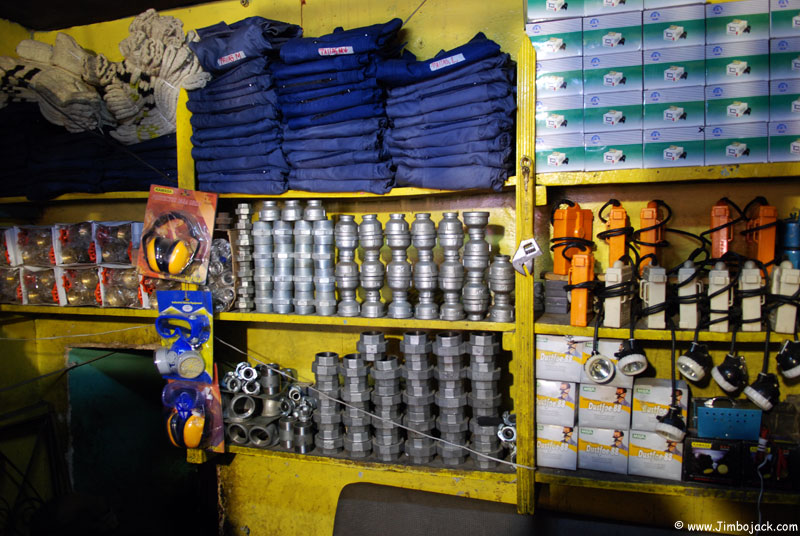
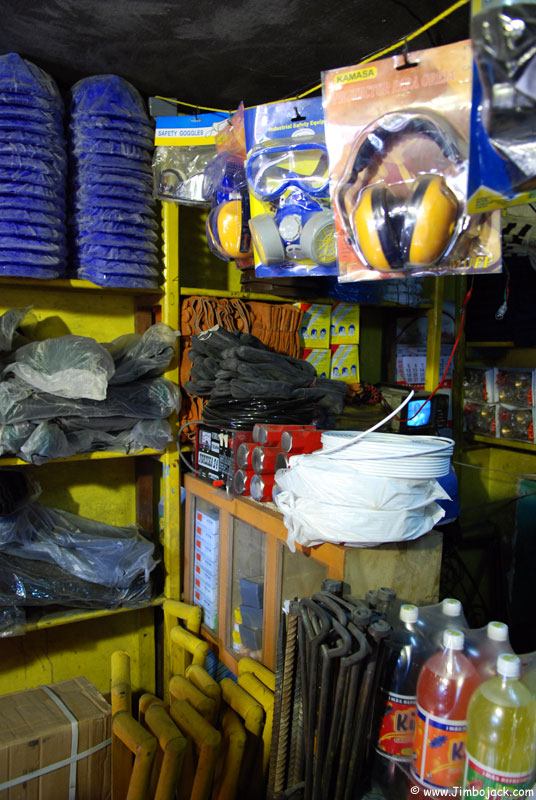
Sticks of dynamite with a bag of Ammonium Nitrate (Used to magnify the explosion). A "set", 1 stick of dynamite, fuse, and a bag of Ammonium Nitrate costs 17 Bolivianos ($2.19). In Bolivia anyone can buy this, even 11 year old kids who sometimes work in the mines.
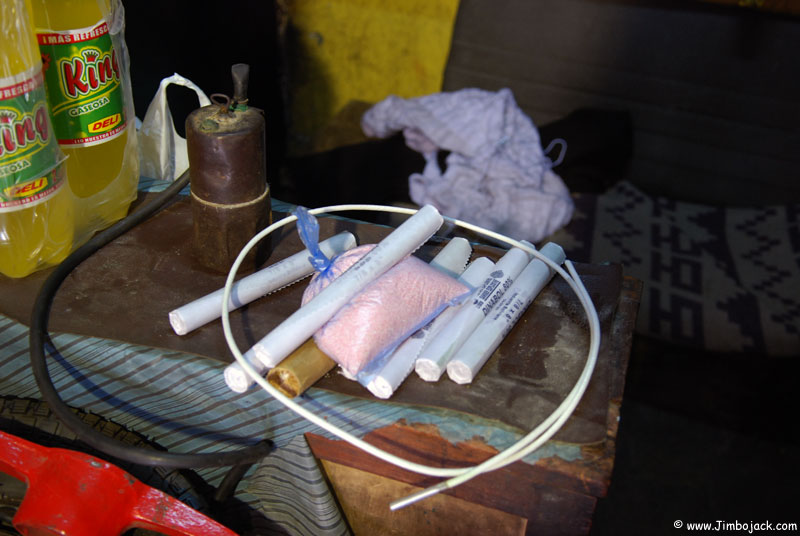
The miners drink a lot, the white with a blue label plastic bottles are 96% pure alcohol. (That's 96% alcohol, not 96 proof)
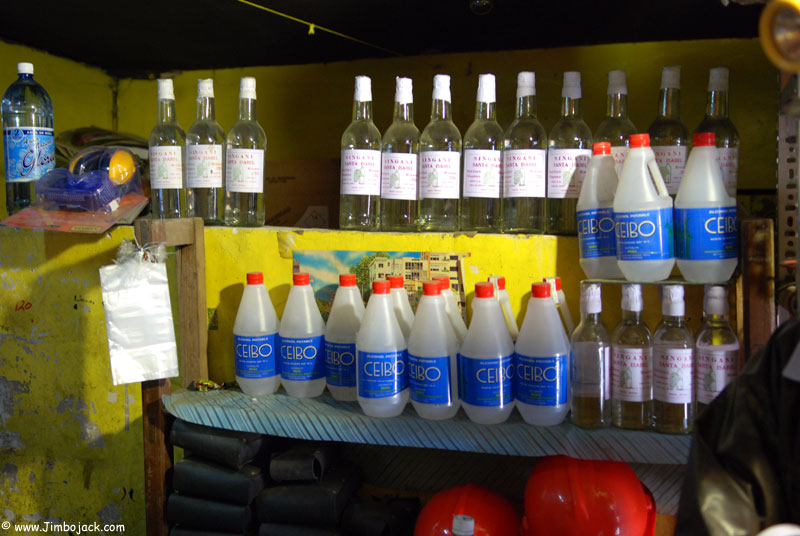
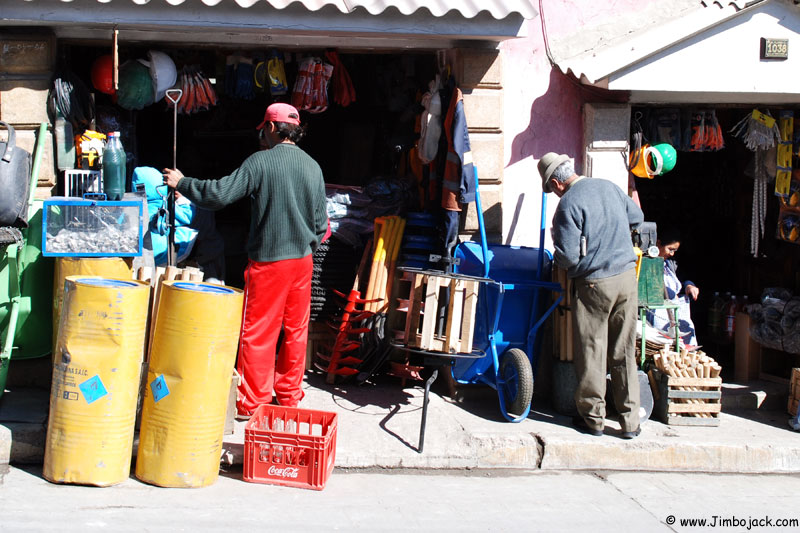
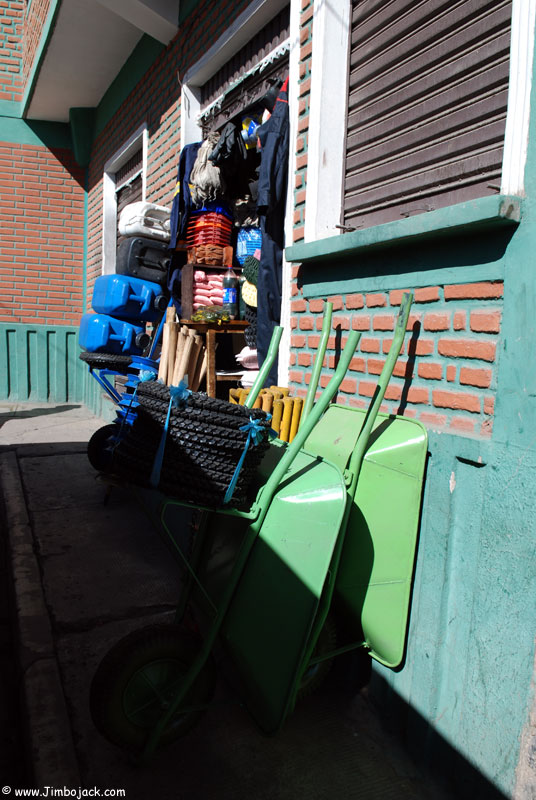
Local Market
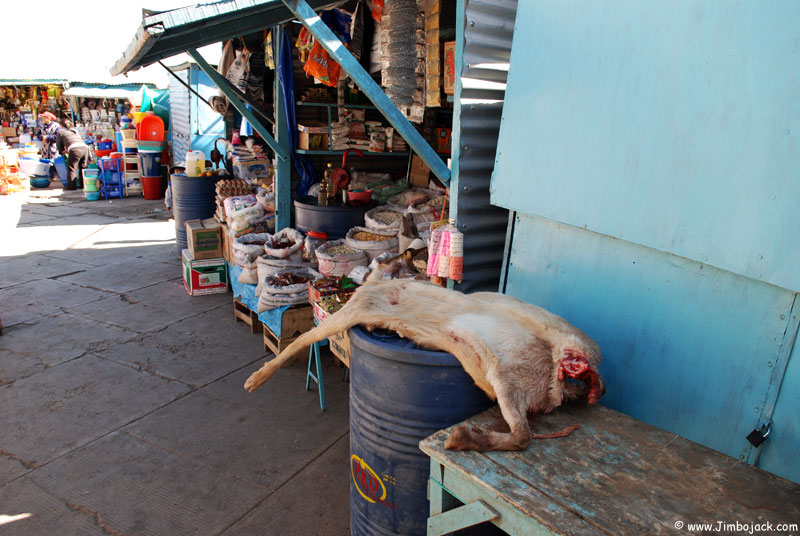
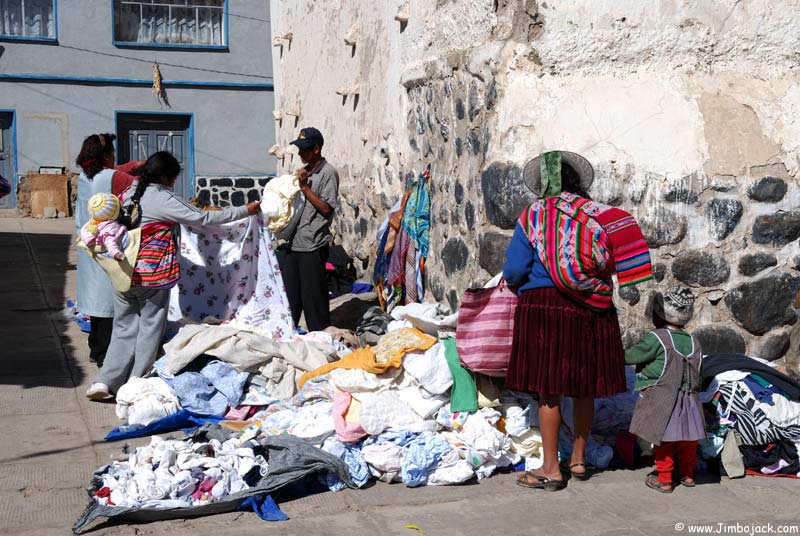
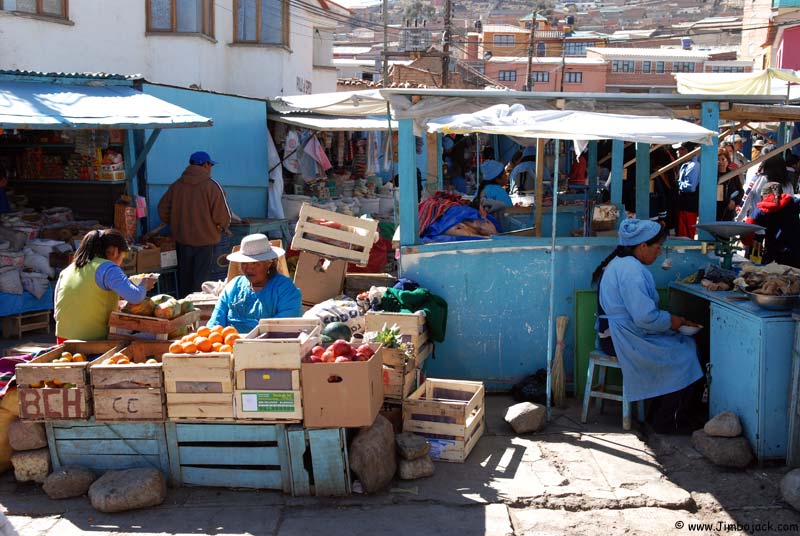
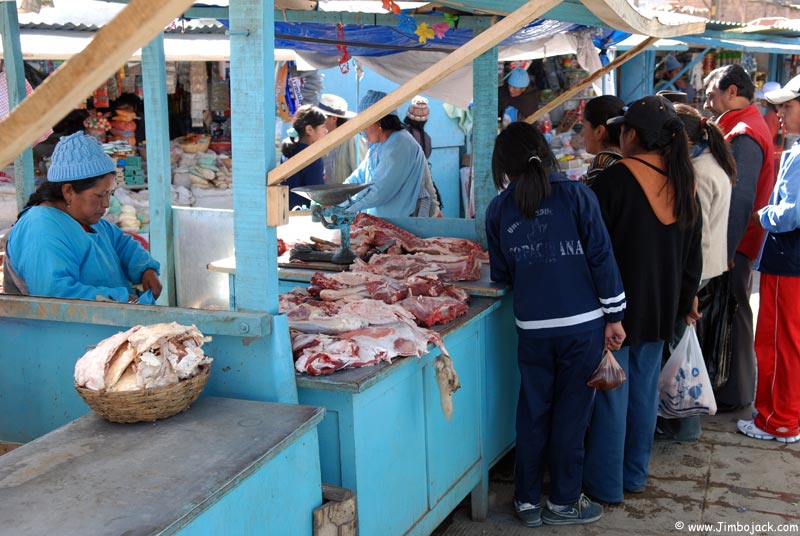
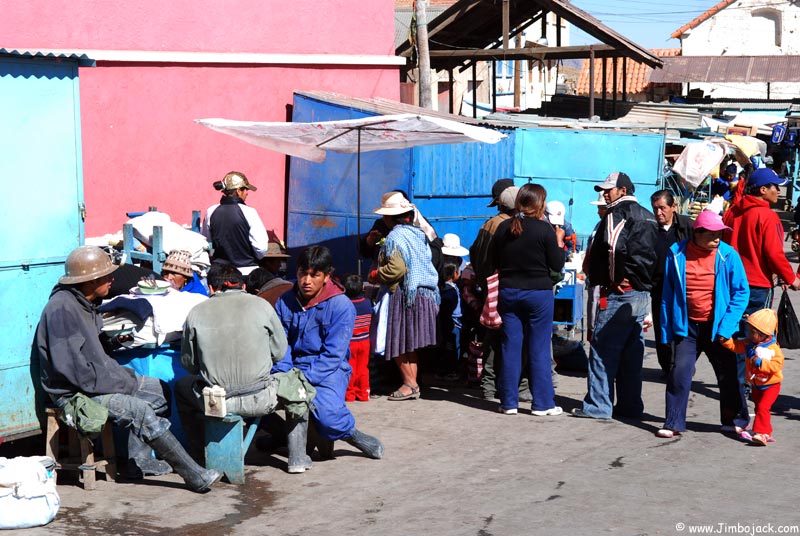
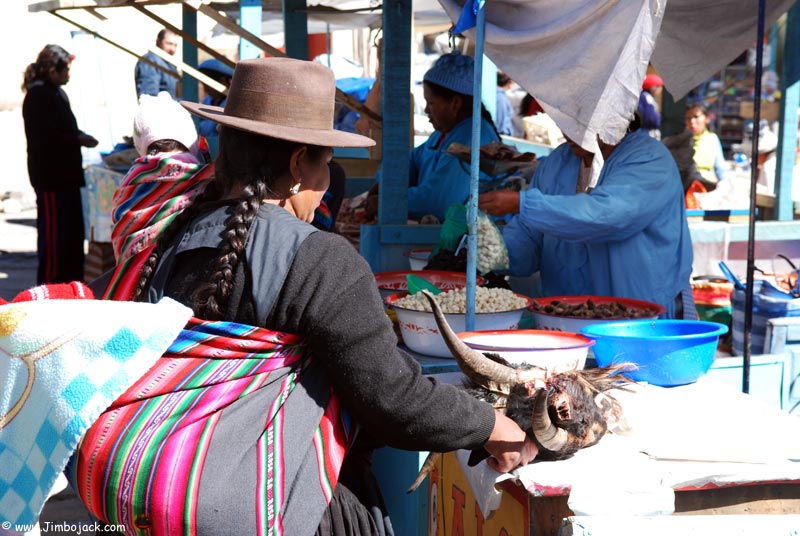
A local ingenio, smelting mill. There are 42 mills in Potosi, employing from around 30 to 100 people each.
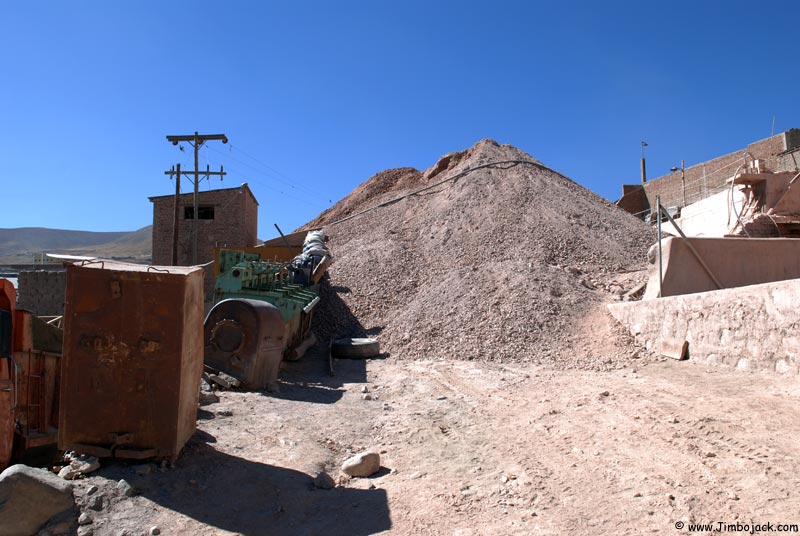
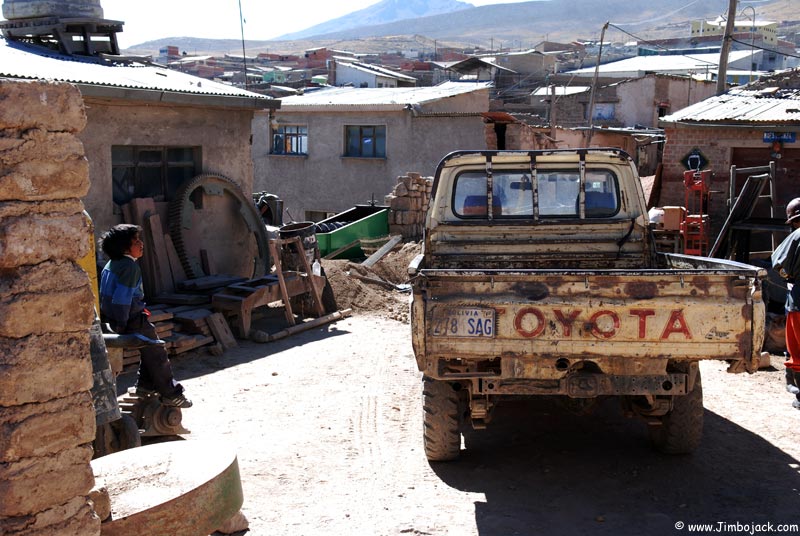
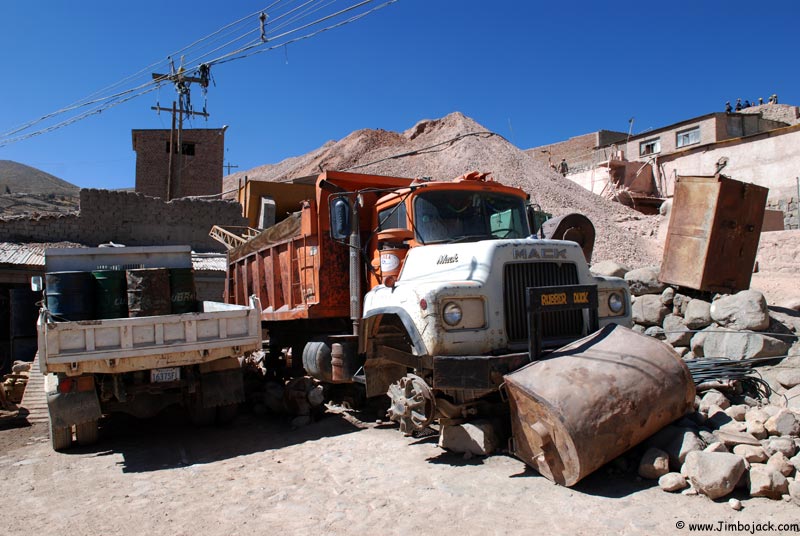
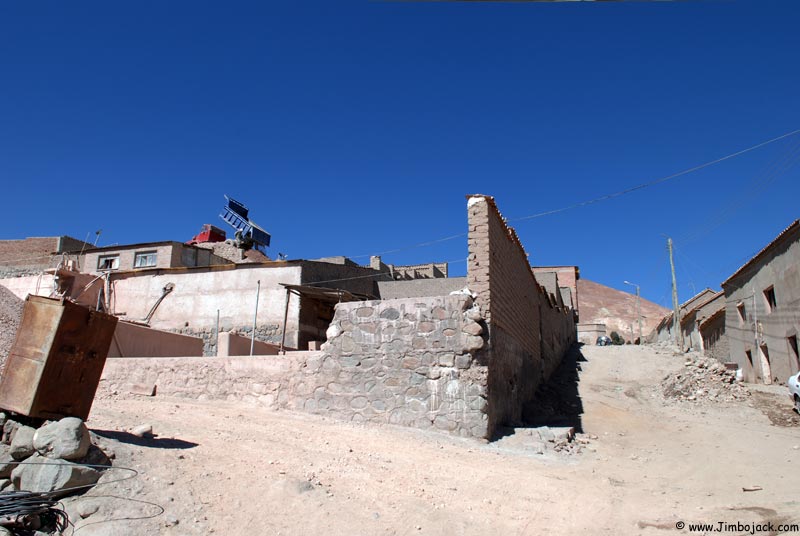
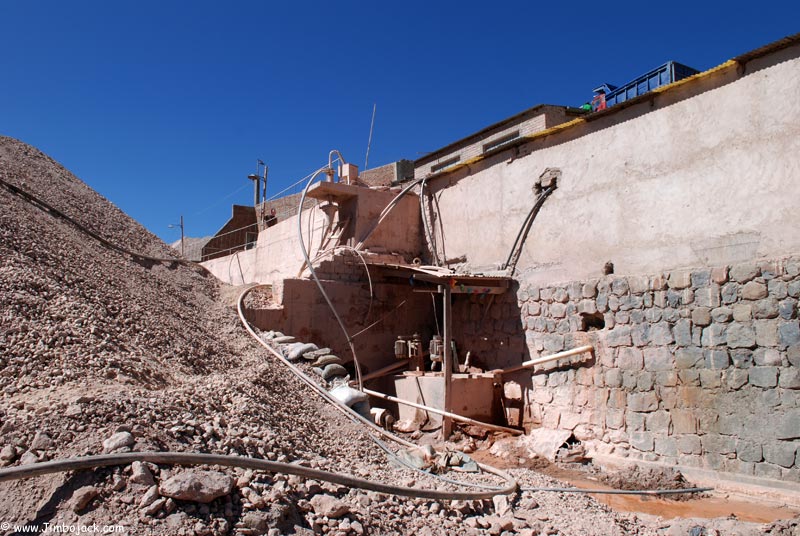
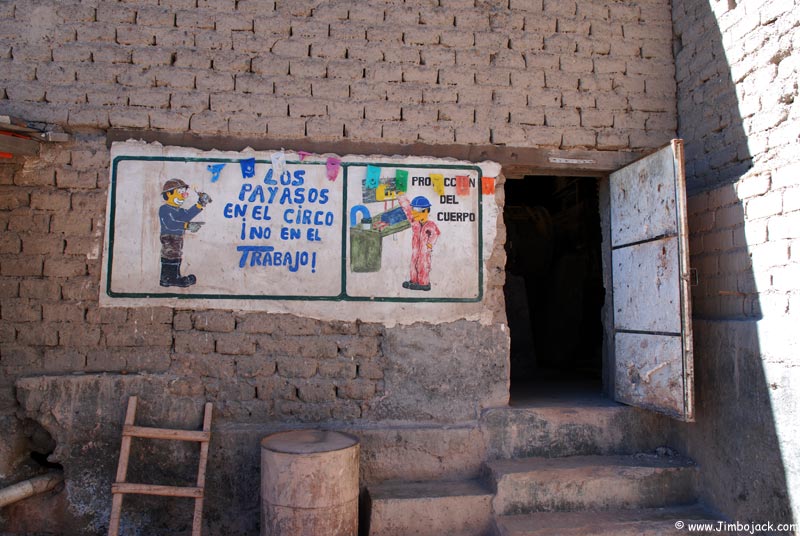
The machines are working to separate the minerals, often hydrochloric acid is used in the process
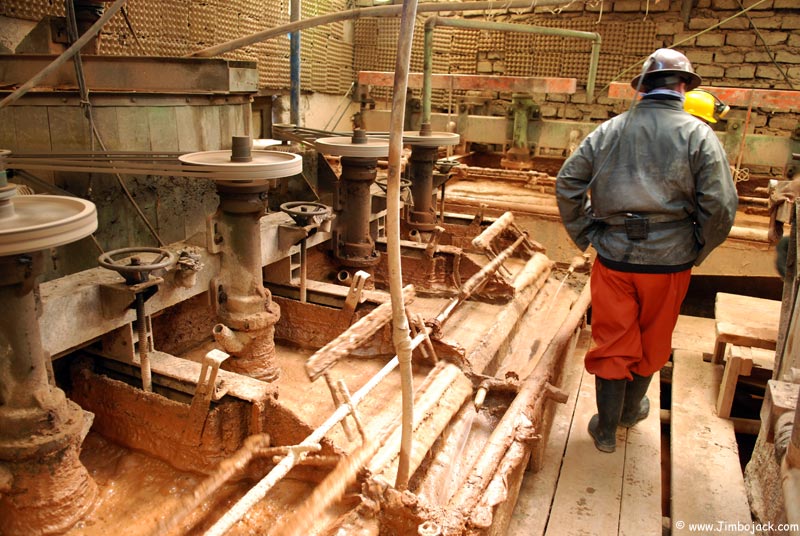
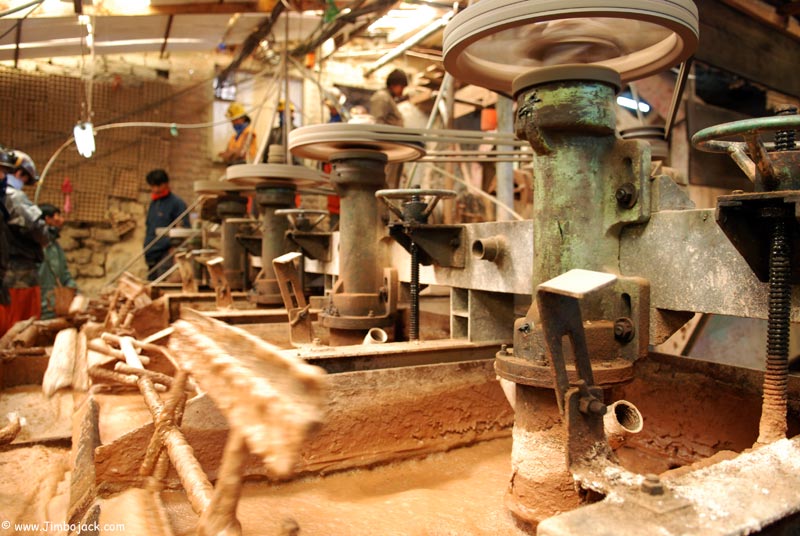
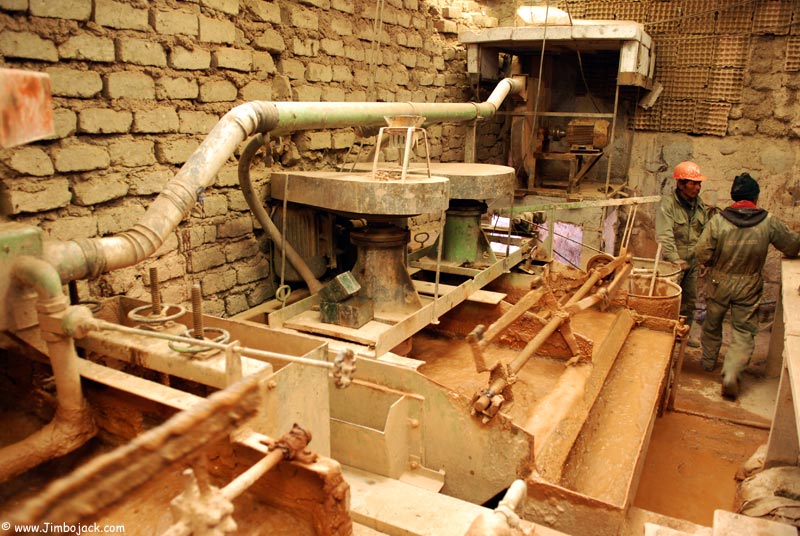
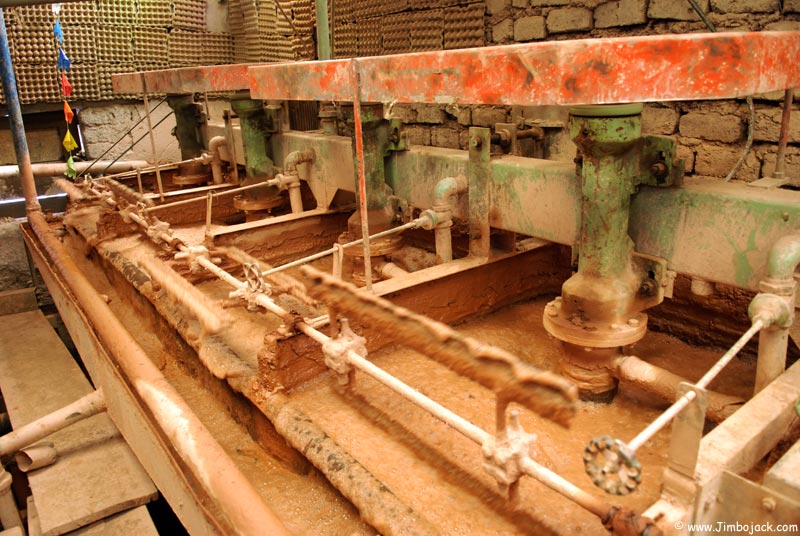
Silver extracted through the process
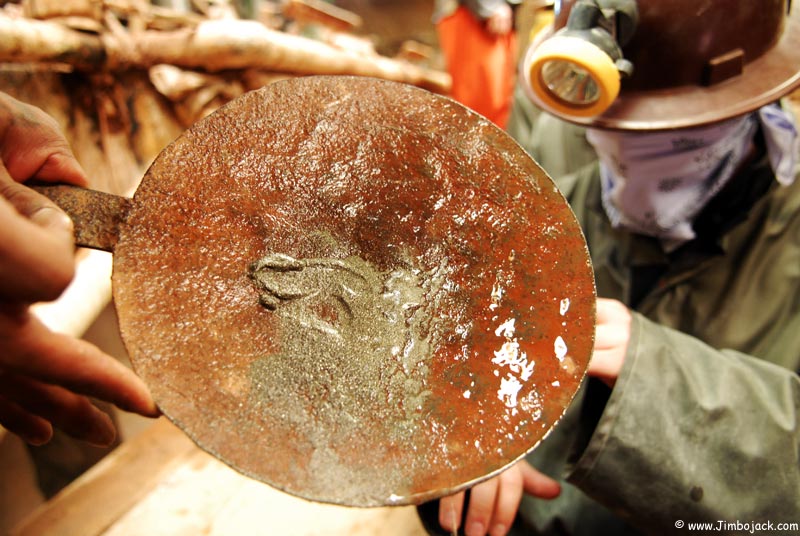
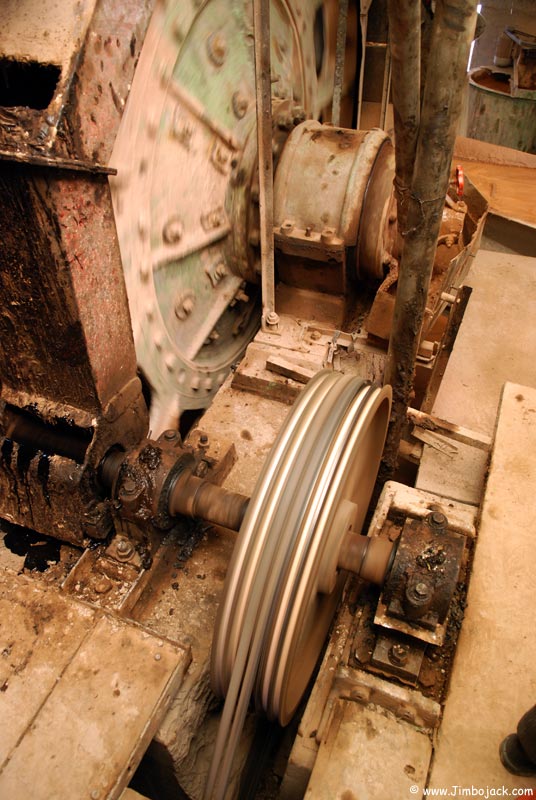
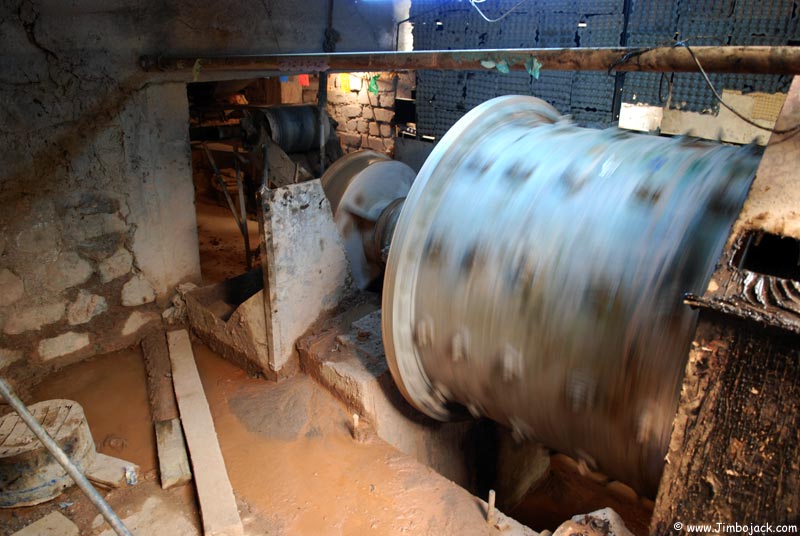
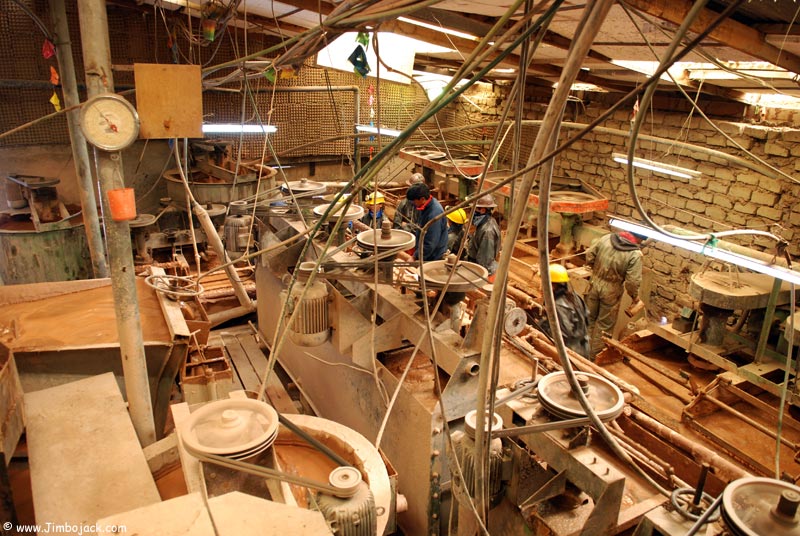
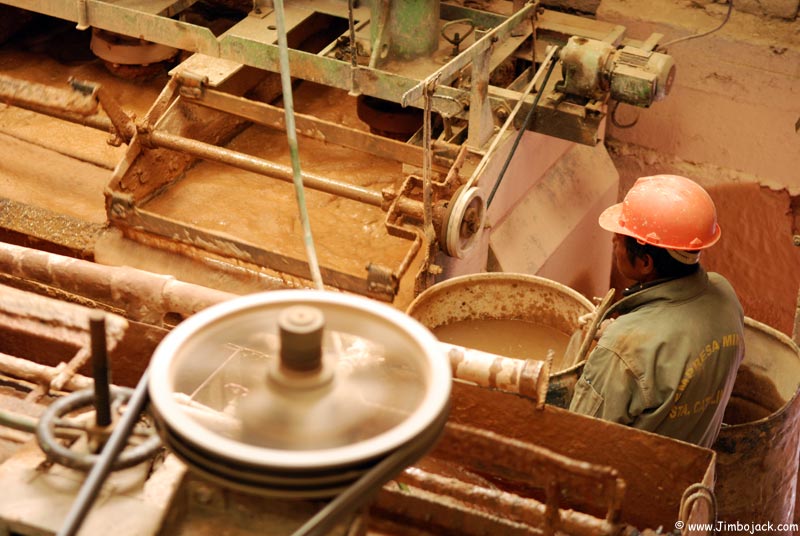
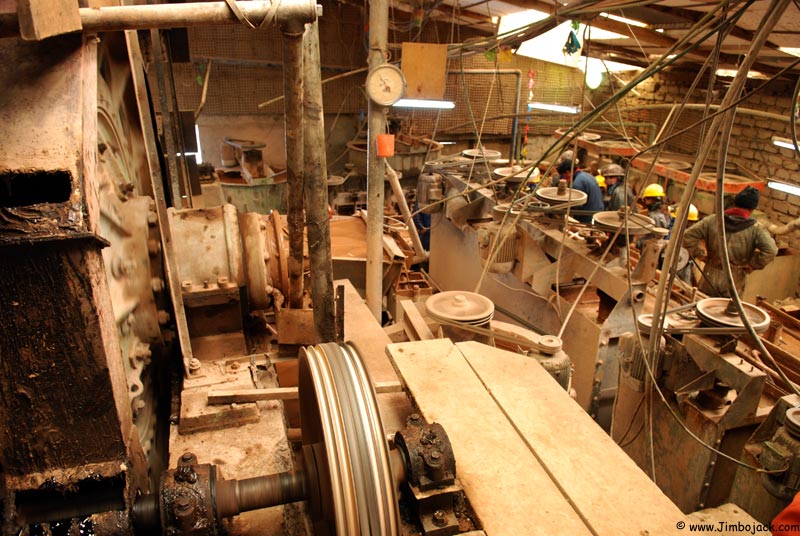
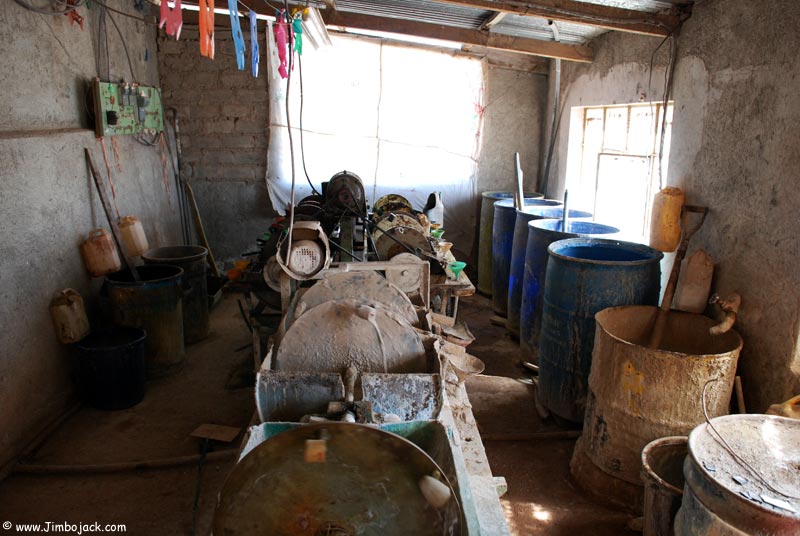
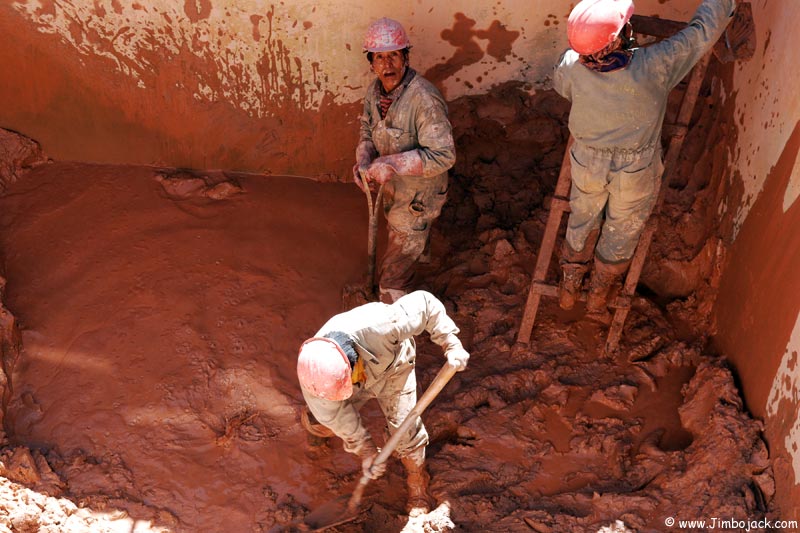
View of the city and Cerro Rico
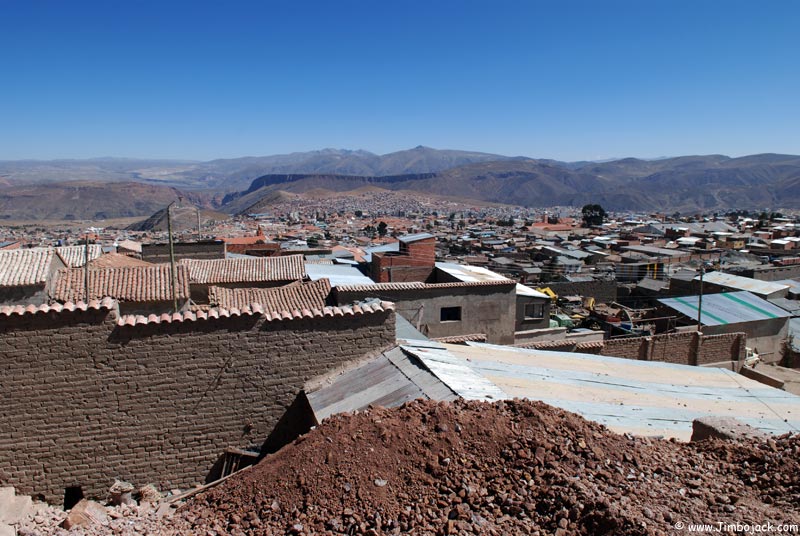
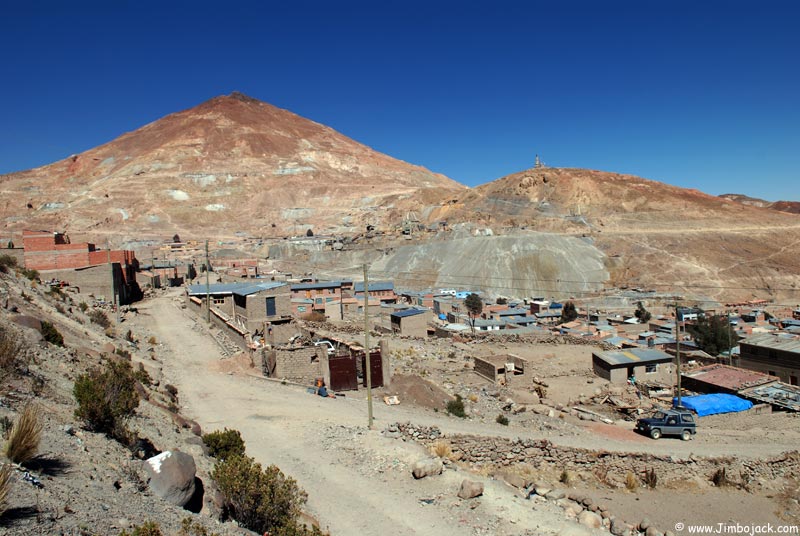
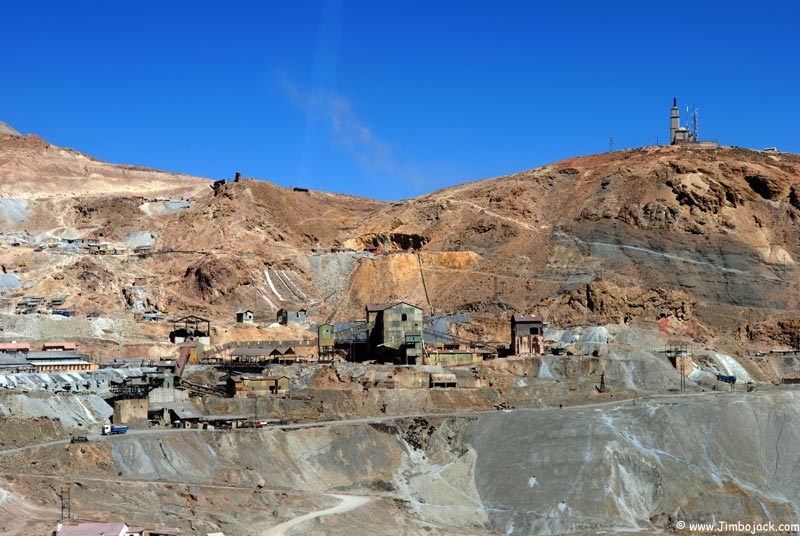
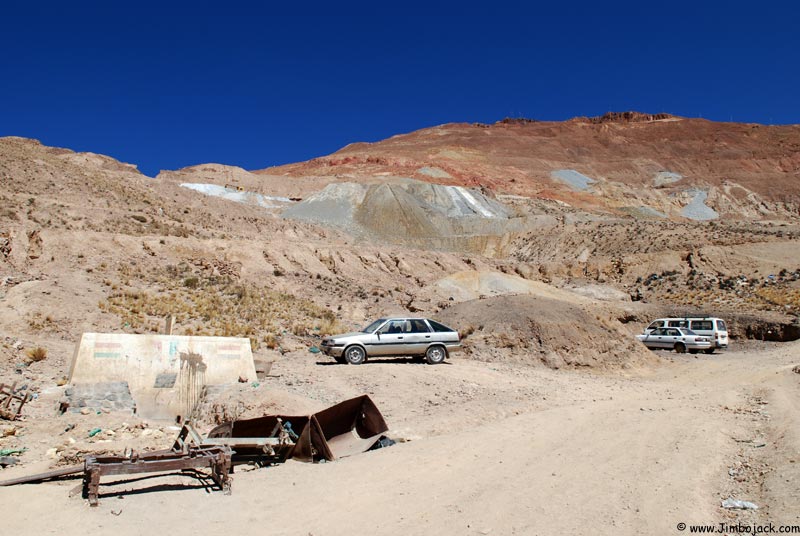
Entrance to the mine
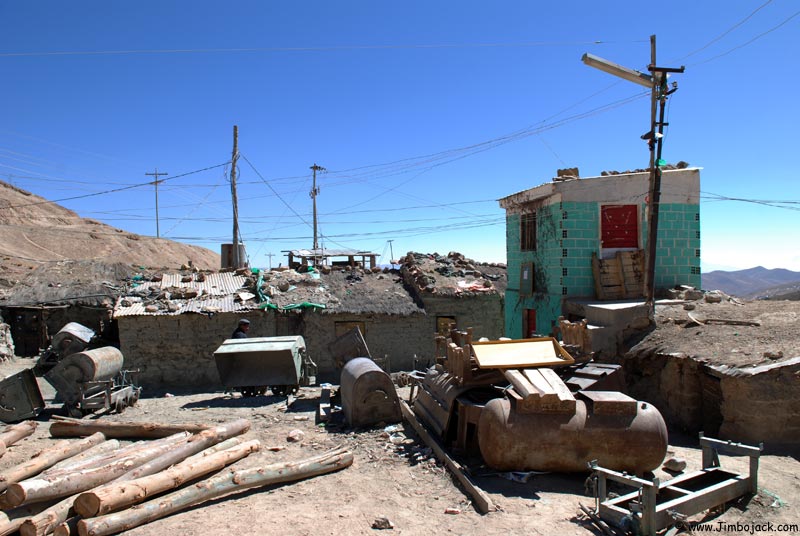
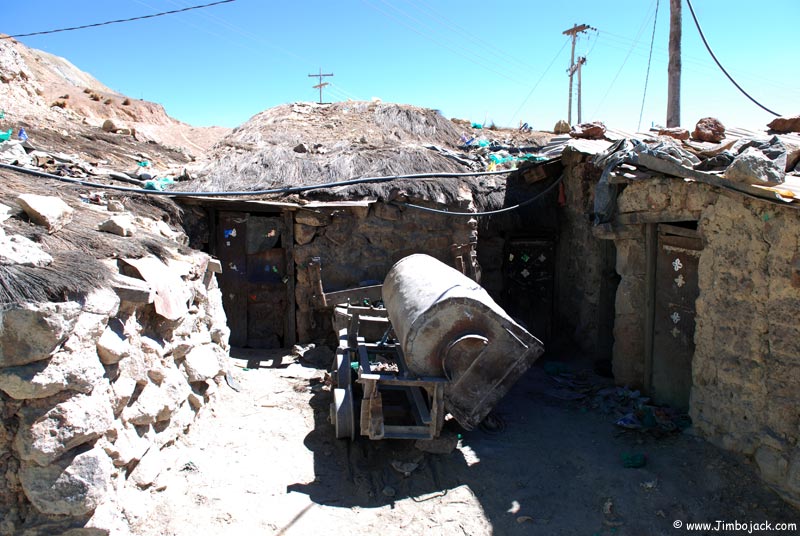
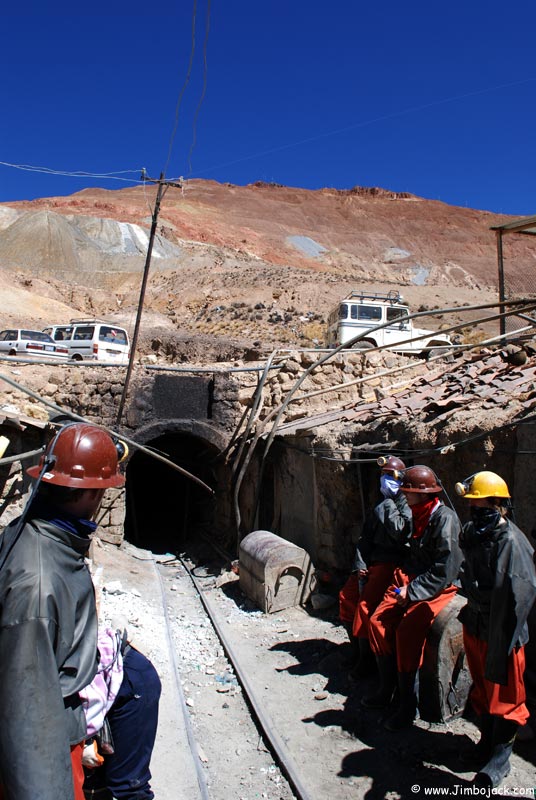
(Continue to Part 2 - Inside of the Cerro Rico, Case Nacional de Moneda (National Mint))